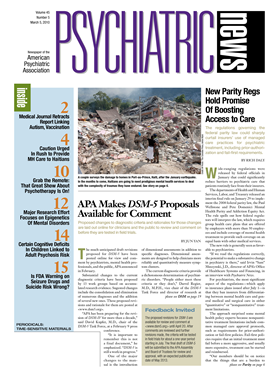Why are certain people fearful, timid, and inhibited, whereas others are nonfearful, bold, and uninhibited? Certainly genes play a role, but brain architecture may as well, a new study suggests.
It has found differences in brain thickness between adults who had been extremely fearful, timid, and inhibited as infants and adults who had not been.
The lead investigator was Carl Schwartz, M.D., an assistant professor of psychiatry at Harvard Medical School. The results were published in the January Archives of General Psychiatry.
Both the ventromedial prefrontal cortex and the orbitofrontal cortex are known to have rich neural connections with the amygdala, the brain's anxiety center, and to play pivotal roles in emotional regulation and behavioral inhibition. Schwartz and his colleagues wanted to find out whether there were any differences in these two brain regions in fearful and nonfearful people.
They focused on 76 18-year-olds who had been enrolled as infants in a longitudinal study of child development. At age 4 months, 34 of them were found to be extremely fearful, timid, and inhibited in temperament, whereas the remaining 42 were found to be the opposite. As the subjects matured, they tended to react to unfamiliar people, objects, and situations as they had in infancy.
Schwartz and his coworkers used structural MRI scans to measure the ventromedial prefrontal cortex and the orbitofrontal cortex in each subject, then compared results from the fearful subjects to those of the nonfearful ones.
Nonfearful subjects were found to have a thicker orbitofrontal cortex than fearful subjects. This finding made sense, the researchers believed, since this brain region is known to modulate anxiety signals from the amygdala, to suppress unpleasant feelings, and to channel negative emotions into more positive ones. So if a person has a thicker orbitofrontal cortex, he or she might be better able to dampen anxiety and act bolder and with less inhibition than a person with a thinner orbitofrontal cortex.
The fearful subjects, in contrast, were found to have a thicker ventromedial prefrontal cortex than the nonfearful subjects. This finding also made sense, the researchers suggested, since this brain area is known to be involved in defensive reactions to novel or aversive stimuli and can lead to higher blood pressure and an increased heart rate in response to the unknown. So if an individual has a thicker ventromedial prefrontal cortex, he or she might be more likely to act timidly and with caution when faced with new people or situations than a person with a thinner ventromedial prefrontal cortex.
Because imaging data were not collected from the subjects in infancy, these findings cannot address the question of whether the brain structural differences observed in them helped shape the personality traits of fearfulness and nonfearfulness. However, the researchers suspect that it might well be the case.
“The results are arresting as they document differences in the visible structure of the adult brain... that are related to behaviors observed much earlier, within the first months of life,” Schwartz pointed out to Psychiatric News. “It is intriguing that one can detect subtle structural differences in adults... that correlate with such complex behavior in infancy.... To our knowledge, there are no previous reports of a relation between infant temperament and brain structure in either infancy or adulthood.”
The results have implications for psychiatrists, he and his colleagues believe. Research has shown that infants who are fearful may later be vulnerable to internalizing disorders, especially social anxiety disorder. Research has also shown that infants who are nonfearful may develop into people who are relaxed, who adapt easily to change, and who are resilient to anxiety and depression, or into people who engage in externalizing behaviors, such as displaying a hot temper, demonstrating stubbornness, or acting impulsively or aggressively.
The study was funded by the National Institute of Mental Health, the National Center for Research Resources, the Mental Illness and Neuroscience Discovery Institute, and the Athinoula A. Martinos Center for Biomedical Imaging.
